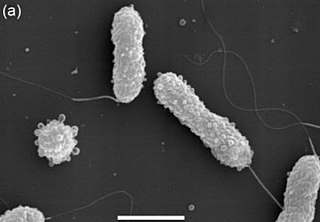Actinokineospora is a genus in the phylum Actinomycetota (Bacteria).
Agrococcus is a genus in the phylum Actinomycetota (Bacteria).
Agromyces is a genus in the phylum Actinomycetota (Bacteria).
Algoriphagus is a genus in the phylum Bacteroidota (Bacteria).
Crocinitomix is a genus in the phylum Bacteroidota (Bacteria).

Massilia brevitalea is a Gram-negative, strictly aerobic non-spore-forming short rods bacterium from the genus Massilia and family Oxalobacteraceae, which was isolated from lysimeter soil. Colonies of M. brevitalea are pale white to yellow in color.
Massilia dura is a Gram-negative, rod-shaped, non-spore-forming bacterium from the genus Massilia and family Oxalobacteraceae, which was isolated with Massilia albidiflava, Massilia plicata, and Massilia lutea from soil samples collected from southeast China. Colonies of M. dura are hard and compact and their color is pale white to yellow.
Psychrobacter submarinus is a Gram-negative, oxidase- and catalase-positive, psychrophilic, halophilic nonmotile aerobic bacterium of the genus Psychrobacter, which was isolated from seawater at a depth of 300 m from the Pacific Ocean.
Aestuariibacter halophilus is a gram-negative, strictly aerobic, halophilic, catalase- and oxidase-positive, rod-shaped bacterium from the genus of motile Aestuariibacter with a single polar flagellum which was isolated from the Ganghwa island in Korea.
Aestuariibacter salexigens is a gram-negative, halophilic, strictly aerobic, catalase- and oxidase-positive, rod-shaped, motile bacterium with a polar flagellum from the genus of Aestuariibacter which was isolated from sediment of getbol on the Ganghwa Island in Korea.
Aminobacter aganoensis is a bacterium from the genus of Aminobacter which was isolated from soil.
Aminobacter lissarensis is a bacterium from the genus of Aminobacter which was isolated from soil of beech woodland on Northern Ireland.
Aminobacter niigataensis is a bacterium from the genus of Aminobacter which was isolated from soil.
Bartonella pachyuromydis is a bacterium from the genus Bartonella which was isolated from Rodentia.
Bosea lupini is a bacterium from the genus of Bosea. B. lupini is an aerobic and gram-negative bacterium capable of chemolithoautotrophic growth.
Bosea massiliensis is a bacterium from the genus of Bosea which was isolated in Marseille in France.
Angulomicrobium amanitiforme is a bacterium from the genus Angulomicrobium which was isolated from a fresh water pond in the United Kingdom.
Chitinimonas viridis is a Gram-negative, rod-shaped bacterium species from the genus of Chitinimonas which has been isolated from an artificial lake in Korea.
Chryseobacterium contaminans is a Gram-negative and rod-shaped bacteria from the genus Chryseobacterium which has been isolated from a rhizosphere contamination from an agar plate in Alabama in the United States.
The Temperatibacteraceae are a family of bacteria.
